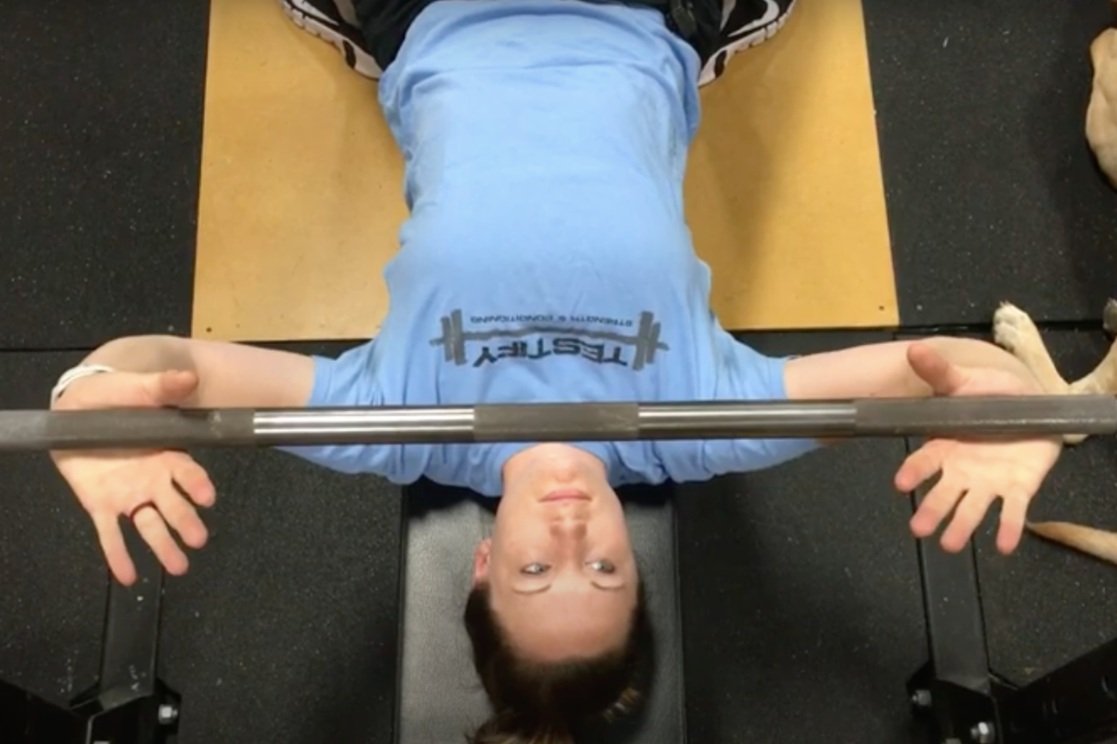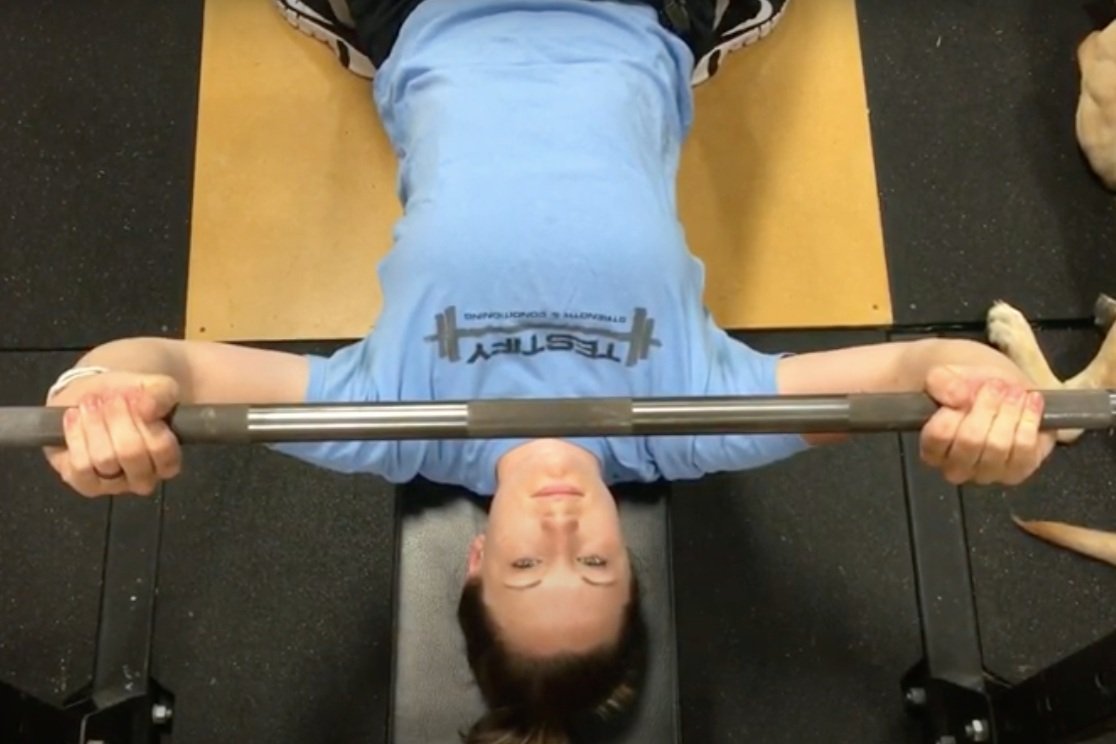The Bench Press: You're Forgetting to Do This - Part 2
/When benching, you know you’re supposed to retract your shoulder blades, push with your legs, and drive that bar up and back to its original starting position, but you’re still forgetting one thing . . .
Get your grip right.
When taking your grip for the bench, you want the barbell to rest on the base or heel of the palm, i.e., directly over the bones of your forearm. This ensures that you have efficient force transfer between you and the bar, which is rather important when trying to move heavy weights. On the other hand, having the bar back toward your fingers causes your wrists to be in full extension (i.e., bent backwards), which is a flimsy and weak position for them to be in when trying to support a heavy load.
To achieve the correct grip, pronate your hands slightly by internally rotating your arms a bit and then squeezing the bar tightly with your fingers (scroll through the photos below for a demonstration).



If this doesn’t quite make sense, you can use the “diamond grip” approach described in this short article.
As always, we hope this helps you get stronger and live better.
(Some links may be affiliate links. As an Amazon Associate, Testify earns from qualifying purchases.)






